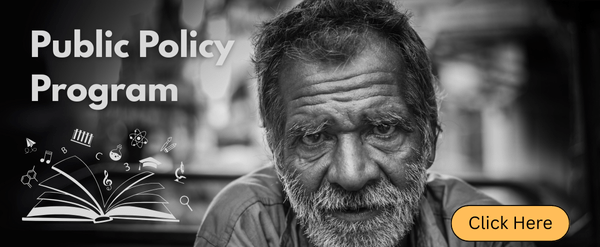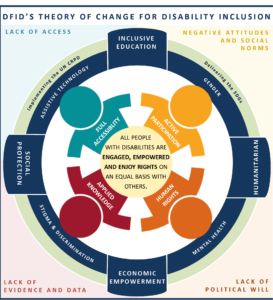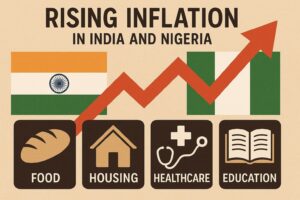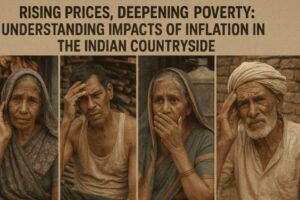
The True Cost of Poverty and Corruption on Education System in Developing Nations
The True Cost of Poverty and Corruption on Education System in Developing Nations Authors-Srishti Prasad, Farjana Akhter, Tarunika B, Christopher.S.Rekwot , P. Harshitha Abstract The paper looks into the intricate relationship between poverty and corruption in the education system, showing how corrupt practices in the sector deter access to quality education and sustain unequal opportunities. Reaching comfortably beyond academia, the book examines, with the help of the most insightful scholarship, as well as case studies, how corruption most negatively impacts vulnerable communities; it is a root cause of inequality that restricts social mobility and economic empowerment. Discussion The discussion highlights the need for transparency, accountability, and strategic investments in education to disrupt this cycle. Societies must take action to empower stakeholders and promote meaningful reform, to restore the promise of education as a path out of poverty and to promote more equitable and sustainable development. 1. Introduction What happens to a nation’s future when its children are denied the basic right to quality education? According to Senator Bernie Sanders, “Education should be a right not a privilege”. Education is considered to be one among the fundamental aspects of human development. It can make a better human being by improving one’s abilities, skills, knowledge, choices and decisions. It can also help one to live a healthy life, to have access to resources needed to maintain a decent standard of living, and to participate in the society. Education can also contribute to other aspects of human development, such as environmental sustainability, gender equality, human rights, and peace. Therefore, education is not only a human right, but also a human development. The Sustainable Development Goal 4 aims to “ensure inclusive and equitable quality education and promote lifelong learning opportunities for all.” Are all children across the globe able to access quality education today? The promise of better-quality education for all remains unfulfilled due to the twin evils namely Poverty and Corruption. According to UNESCO’s Global Education Monitoring Report 2024, approximately 251 million children and youth aged 6 to 18 are still out of school globally with only 1% decrease in nearly a decade. The report highlights chronic under-investment especially in low-income countries and also emphasised that education should be a global priority. (Azoulay, 2024) In various developing countries, only a small percentage of children complete their primary school and even fewer children complete secondary school. The reasons behind it include difficulty to reach schools as well as the cost of schooling. This is seen as a crisis in many developing countries. Children being denied the right to education due to poverty are also being denied various opportunities, such as being employed, supporting their families and contributing to the development of their communities. (Nortje, 2017) It had been well said by Peter Eigen that Corruption is a major cause of poverty as well as a barrier to overcoming it. The two scourges feed off each other, locking their populations in a cycle of misery. Corruption must be vigorously addressed if aid is to make a real difference in freeing people from poverty. Nicole Duerrenberger confirmed that Corruption negatively correlates with the expected years of schooling using data from 88 developing countries. (Duerrenberger & Sussanne Warning, 2018) 2. Understanding Poverty and Corruption in Context of Education Comprehending the rich nexus between Poverty & Corruption with respect of education and without knowledge is vicious circle which reinforces inequality and impede development. When corruption infiltrates education—whether through money paid for admissions or stolen school funds—it weakens the very quality and access of education, particularly for the poor. Transparency International reveals how corruption negates the quality of education with effects that include larger class sizes, teachers not being paid properly, lack of learning materials that hurts the less advantaged child12. And when educational resources are siphoned away, or access sold to the highest bidder, the promise of education as an escape from poverty is broken. Academic work tends to suggest that it is not just the case that corruption exacerbates poverty, but that it is driven by poverty. Publications like those of Gupta et al. (2002) and Tebaldi and Mohan (2010) show that higher levels of corruption accentuate income inequalities and reduce the opportunity of the poor to invest in education3. Poor families, from countries with high rates of poverty, may also be compelled to make “under-the-counter” payments for schooling “free” at the point of entry (as in Bangladesh, where more than a third of all students paid unofficial fees to gain access to schooling2). This is a particular feedback loop: poverty leads to susceptibility to corruption which leads to (made worse by) poverty which leads to vulnerability to corruption, and so on. Such a vicious circle cannot be reversed by policy changes alone but by a society-wide orientation towards transparency, accountability, and investment in education. Supporting evidence of this finding is evident from that Fomicová and Ortega (2017) found poverty and reduction in education and corruption to be negatively related.4 In comparison with countries that have lower education investment and less control over corruption, Castro (2019) argued that there is greater reduction in poverty in countries that have educational investment and active control over corruption. When we empower communities to demand better governance and ensure children receive the learning and health resources that those with more advantages already enjoy, we foster a fairer and more prosperous society 3. Poverty as a Barrier to Educational Access At present, there are lots of developing countries where poverty stands as one of the most significant barriers to quality education. The consciousness is profound, reinforcing a cycle of inequality and hindering economic development. 3.1 Financial Barriers:









